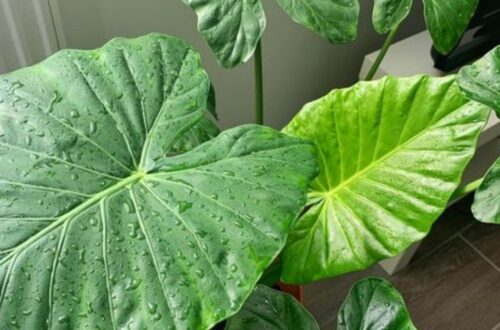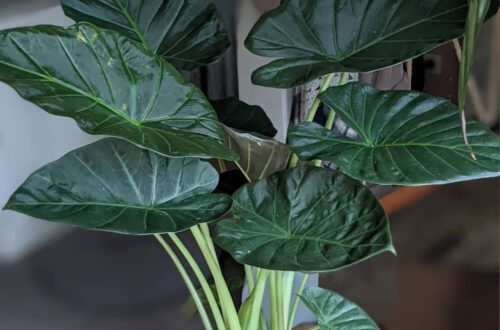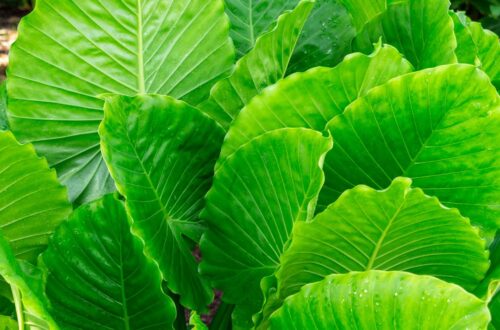
Alocasia Tiny Dancer
Welcome to our guide to alocasia tiny dancer care and propagation. The key to caring for an alocasia tiny dancer is to maintain a high humidity level and not over water it….
Alocasia Tiny Dancer Summary
| Light needs: | Medium to bright indirect sunlight. |
| Watering needs: | Check weekly, water if top 25% of the soil is dry. |
| Fertilizer: | A balanced fertilizer once a month in spring and summer. |
| Soil: | A well draining potting mix with 20% perlite. |
| Humidity: | 60-70%. |
| Temperature: | 18-25ºC (64-77ºF). |
| Where to buy: | Try one of these Rare Plant Shops. |
| Common issues: | Crisping due to lack of humidity, pests on leaves. |
Introduction
A thin stemmed, tiny leaved, delicate alocasia, the alocasia tiny dancer. It is a hybrid of alocasia brisbanensis × alocasia odora (according to Google Patents). We cover all you need to know about alocasia tiny dancer care in the following guide…
See also: Alocasia Dark Star, Alocasia Azlanii, Anthurium Luxurians Care, Scindapsus Treubii Moonlight.
Tip: we recommend Etsy for buying plants. Look for the best rated seller you can, and try to buy as close to your home as possible so the plant does not travel too far.
A note about affiliate links: when you buy a plant, pots, soil, or other goods through links on this article we sometimes earn a commission. It doesn’t cost you anything, but it really helps us out if you do use them. Thanks a lot! An example of this is if you buy a plant on Etsy using this link. Read our privacy policy for more information. Thanks again.
Light Needs
Bright indirect sunlight is optimal, they do not want any direct sun, and will be ok in medium light areas too.
How Often to Water An Alocasia Tiny Dancer
Check it once a week, water if top 25% of the soil is dry. Alocasias like slightly moist soil but do not like being too wet.
Tip: when it comes to watering keep them moist but not soaking wet, tip out excess water after watering so they don’t get a soggy bottom!
Fertilizer
Use a balanced fertilizer once a month in spring and summer. Do not feed in winter when the plant grows much less. IF you don’t feed them at all they’ll be fine but it can help for faster growing plant.
Soil
A well draining potting mix: 20% perlite and standard potting compost will be great for drainage. You want a good soil for an alocasia like this. For more on which soil to buy or how to make your own see our guide: Alocasia Soil.
When To Repot An Alocasia Tiny Dancer
Pot it up a size when the plant gets really root bound. You can do it year round, but the best time to do this is in Spring. This will mean they have plenty of room to grow over the warmer months.
Do alocasia like to be root bound?
Alocasias are normally fine with being slightly root bound but they will no grow well if really root bound, so check them in spring to make sure they have plenty of room to grow as the weather gets warmers.
Humidity
60-70% humidity is best for alocasias like this, which means adding to normal household humidity. The ideal way to do this is with a humidifier, but you can also do it with a pebble tray of water under the plant and misting it occasionally.
Tip: Keep them humid, at least 60% in the day and they’ll be ok with a bit less at night. You can buy a humidity meter (affiliate link) to keep an eye on maximum and minimum levels.
Temperature
During the day aim for 18-25ºC (64-77ºF) and they will be fine, so they’ll do well in most homes. At night try to keep them above 10°C (50°F) at night.
Alocasia Tiny Dancer Scientific Name
The alocasia tiny dancer’s scientific name is ‘alocasia brisbanensis × alocasia odora’, which means it’s a hybrid between the alocasia brisbanensis and alocasia odora.
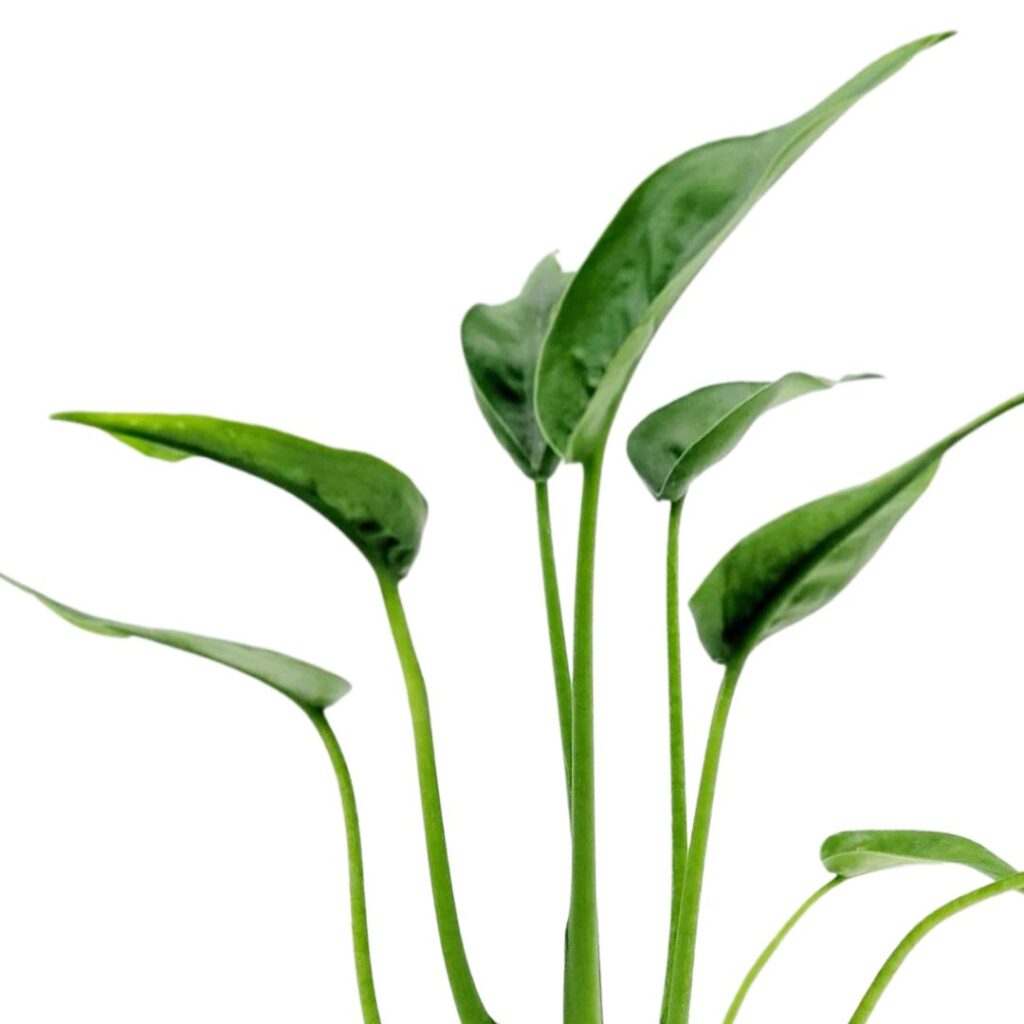
Propagate Alocasia Tiny Dancer
Propagate an alocasia tiny dancer by separating out smaller plants by division at the base. Take the plant out of it’s pot and brush off as much soil as you can. Split the smaller plants off from the main plant, making sure to take some of the root system with each small plant. Pot them up separately, and you’re done.
Alocasia Tiny Dancer USDA Zone
Zones 10-11.
Is It Toxic To Cats?
It is toxic to cats and dogs if ingested, so seek vets advice immediately if you think your pet has eaten any.
Alocasia Tiny Dancer Leaves Turning Yellow
Yellow leaves occur from under or overwatering. You should be able to tell which one it is from you watering frequency and the soil moisture. The soil should be damp but not waterlogged or dry.
Where To Buy
Try one of these Rare Plant Shops or Etsy.
Other Names
Alocasia brisbanensis × alocasia odora.
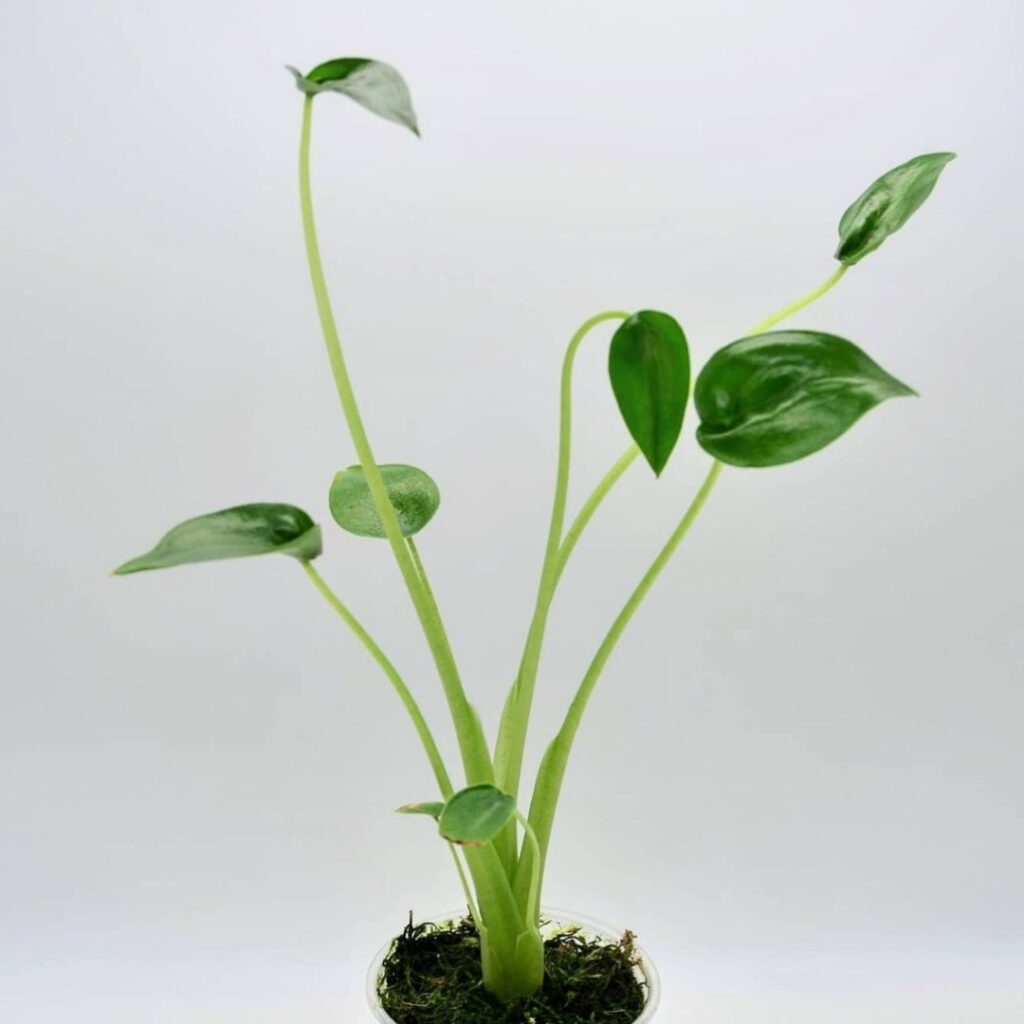
Alocasia Tiny Dancer FAQs and Common Problems
Crisping due to lack of humidity is a common issue, you can give the plant a pebble tray under it to increase the humidity and mist it regularly.
Also keep an eye out for common plant pests that love the humidity levels of alocasias.
Additional Resources
Links:
- More info on the Wikipedia page.
- More info on the Kew Gardens plant Page.
- More info on the RHS plant Page.
- Patent Info.
Other Articles You Might Like
You might also like our other articles: Alocasia Azlanii, Alocasia Silver Dragon, Alocasia Lauterbachiana, Alocasia Reginula a.k.a. Alocasia Black Velvet.
Please follow us on Instagram and Pinterest for regular plant updates and occasional plant giveaways.


